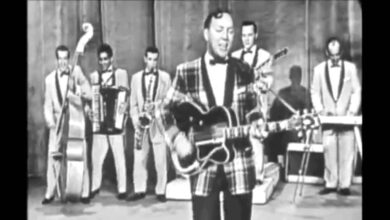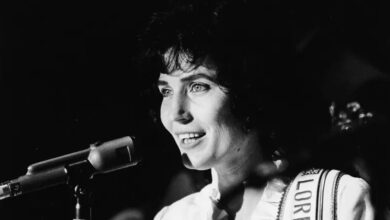The Statler Brothers’ “More Than a Name on a Wall” Honors Vietnam’s Fallen and Resonates Across Generations
Released in 1989, “More Than a Name on a Wall” by The Statler Brothers quickly became one of the most emotionally powerful songs in their repertoire, capturing the hearts of a nation still healing from the scars of the Vietnam War. The song was featured on their Greatest Hits album and made its way to number six on the Billboard Hot Country Singles chart. But beyond its commercial success, the song achieved something far more lasting—it gave voice to the silent grief of thousands of families who had lost loved ones in war.
The Statler Brothers—Don Reid, Harold Reid, Phil Balsley, and Jimmy Fortune—were already country music legends by the time this track was released. Their blend of gospel roots, tight four-part harmonies, and a penchant for storytelling had defined their sound for decades. Having started as a gospel quartet in the late 1950s and later gaining widespread fame as part of Johnny Cash’s road show, the Statlers carved out a space in country music as voices of tradition, nostalgia, and moral sincerity.
“More Than a Name on a Wall” was co-written by tenor Jimmy Fortune, who joined the group in the early 1980s, and John Rimel. The idea was inspired by a visit to the Vietnam Veterans Memorial in Washington, D.C., where Fortune had been struck by the emotional weight of seeing so many names etched into the black granite. The vision of a grieving mother kneeling at the wall gave birth to a song that captures sorrow, pride, and undying maternal love in just a few verses.
The production of the track was intentionally understated. With Jerry Kennedy producing, the arrangement relied on simple acoustic instrumentation, subtle piano lines, and the trademark Statler harmony. The focus remained squarely on the lyrics, which deliver their emotional punch through the mother’s prayer—pleading not for her son to be remembered as a name carved in stone, but as a boy who lived, laughed, and mattered.
When the song hit the airwaves, it resonated with a wide and varied audience. For veterans, their families, and countless Americans who had lived through the Vietnam era, it became more than just a country song—it became a means of expression, a way to articulate grief that had long gone unspoken. It was soon embraced by memorial services, military events, and even church gatherings, where its message of remembrance found a sacred space.
What made the song culturally significant was its timing. By the late 1980s, America had begun reckoning with how it had treated its Vietnam veterans. Public sentiment was shifting, and this song helped crystallize that change. Without politicizing the war, it focused on the human cost—on the sons and daughters who didn’t come home, and the families who were left with only memories and names.
For The Statler Brothers, this song marked a deepening of their role as chroniclers of the American experience. While they had always sung about family, faith, and patriotism, “More Than a Name on a Wall” gave them a song that carried historical weight and personal gravitas. It opened the door for more performances at veterans’ events and national memorials, further cementing their place in the country’s collective heart.
The track inspired several other artists to revisit and record their own versions in the years that followed, including solo performances by Jimmy Fortune after the Statlers retired. Each cover brought its own flavor, but all stayed true to the song’s core message of remembrance and humanity. It became a song that singers approached with reverence, understanding that they were carrying forward a story that belonged to many.
The timing of the release also aligned with renewed national conversations about healing and honor. As new war memorials were built and efforts were made to honor previously overlooked service members, “More Than a Name on a Wall” provided a poignant soundtrack. It helped listeners reconcile patriotic pride with personal grief, allowing a space for both.
Decades after its release, the song remains a staple on patriotic playlists, especially around Memorial Day and Veterans Day. Radio stations continue to spin it annually, and it’s often played at tribute concerts or ceremonies where the goal is to acknowledge the ultimate sacrifice made by military families. Its enduring appeal lies not just in melody, but in message.
Beyond its emotional power, the song influenced how country music approached themes of military service and loss. It paved the way for future hits that explored similar territory with grace and directness—songs like “Arlington” by Trace Adkins or “I Drive Your Truck” by Lee Brice can trace part of their lineage back to the groundwork laid by the Statlers.
Though the Statler Brothers retired from touring in 2002, and Harold Reid passed away in 2020, the legacy of “More Than a Name on a Wall” lives on. It is often cited as one of the group’s most meaningful contributions, a song that transcends genre and generation. It continues to remind us all that behind every war statistic lies a life, a story, a family.
In the end, “More Than a Name on a Wall” is not only a mother’s cry to heaven—it’s a national prayer. Through its humble delivery and heartfelt words, it has become a timeless tribute to sacrifice and memory. And in doing so, The Statler Brothers didn’t just write a song—they gave a voice to every person who ever stood in front of a monument and whispered, “He was my son.”



